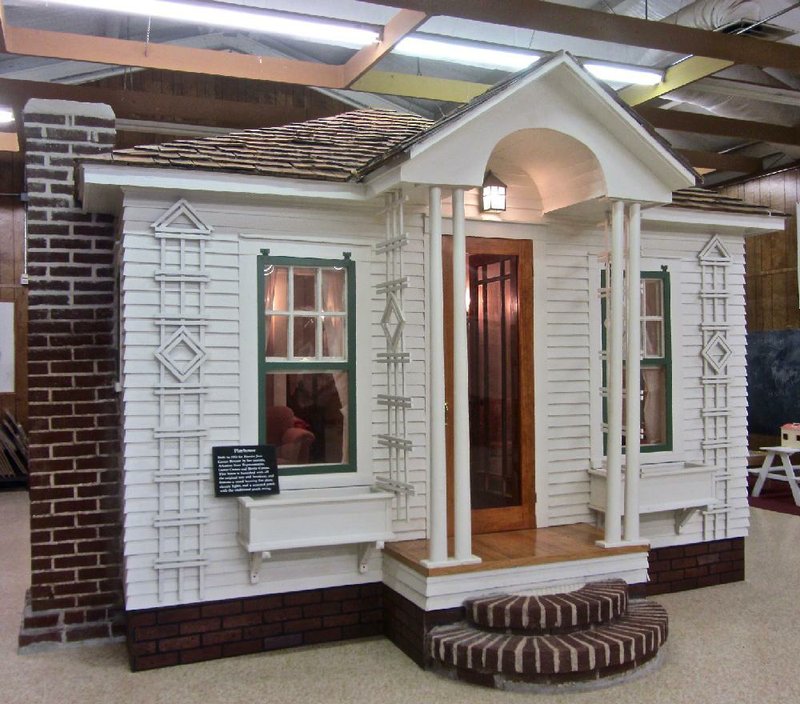ARKANSAS POST -- As the Great Depression deepened in 1933, Harriet Jane Carnes was a lucky little girl. Her father built her a house to play in -- not some dinky dollhouse, but a fully furnished playhouse with wood-burning fireplace. She could invite her friends inside.
Dad happened to be Grover C. Carnes, a state legislator and lumber-company owner from DeWitt. Scaled down to a grade-schooler's size, the playhouse later sat outdoors at nearby Arkansas Post Museum before being moved inside for protection from the elements. It is a highlight among the varied exhibits at this compact state park on the Grand Prairie.
Visitors are not allowed to enter the playhouse. But peering through the windows allows a good look at the equipped kitchen and other rooms, which were wired for electricity. On the screened back porch hangs a youngster-size swing that seats two.
Arkansas Post was the site of the first European settlement within our state's current boundaries, established in 1686 by six French traders under the aegis of Henri de Tonti. Displays at the state park barely mention that early history, focusing instead on developments from after the Civil War era to modern times.
If that seems like an odd omission, the explanation lies a couple of miles east at Arkansas Post National Memorial, along the Arkansas River and closer to the 17th-century settlement's site. The federal facility deals with those earlier events -- including the Revolutionary War's last skirmish, in April 1783, and the Union capture of the Confederacy's Fort Hindman, in January 1863.
What is now the federal site was established as a state park in 1929 by the General Assembly. It was transferred to the National Park Service by Congress in 1960. Three years later, the Grand Prairie Historical Society bought the current state-park location and built Arkansas' first county-supported museum. It became a state park in 1997.
The Carnes playhouse is in the Peterson Building, one of five exhibit structures at Arkansas Post Museum. That building's potpourri of objects includes a general-store counter, farm implements and a large collection of toys from the 1920s and '30s. One eye-catcher is a large copper moonshiner's still confiscated by Arkansas County sheriff's deputies in 1978 near rural Tichnor.
Beyond the Peterson Building stands a reproduction of a gallows that was erected in 1908 for executions in the county. Five years later, electrocution became the new method of meting out justice in Arkansas. So the gallows was never used for a hanging.
A bit farther on, the Refeld-Hinman Log House is a dog-trot cabin constructed in 1877 and moved a half-mile to its present location in the 1960s. A sign poses this question: "Can you imagine building your home without power tools and manufactured material?"
Near the log house, another sign points out the ongoing development of a program to restore prairie grasses. Four species of native grasses have been planted on the acreage: big bluestem, little bluestem, Indian grass and switchgrass. They give at least a hint why the surrounding landscape became known as the Grand Prairie.
Arkansas Post Museum, 6 miles south of Gillett at the junction of U.S. 165 and Arkansas 169, is open 8 a.m.-5 p.m. Tuesday-Saturday, 1-5 p.m. Sunday. Admission is free. For details, visit arkansasstateparks.com or call (870) 548-2634.
Arkansas Post National Memorial, on Arkansas 169 a couple of miles east of the state park, is open 8 a.m.-5 p.m. daily. Admission is free. Visit nps.gov/arpo or call (870) 548-2207.
Style on 01/31/2017
